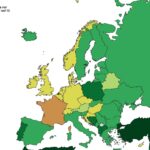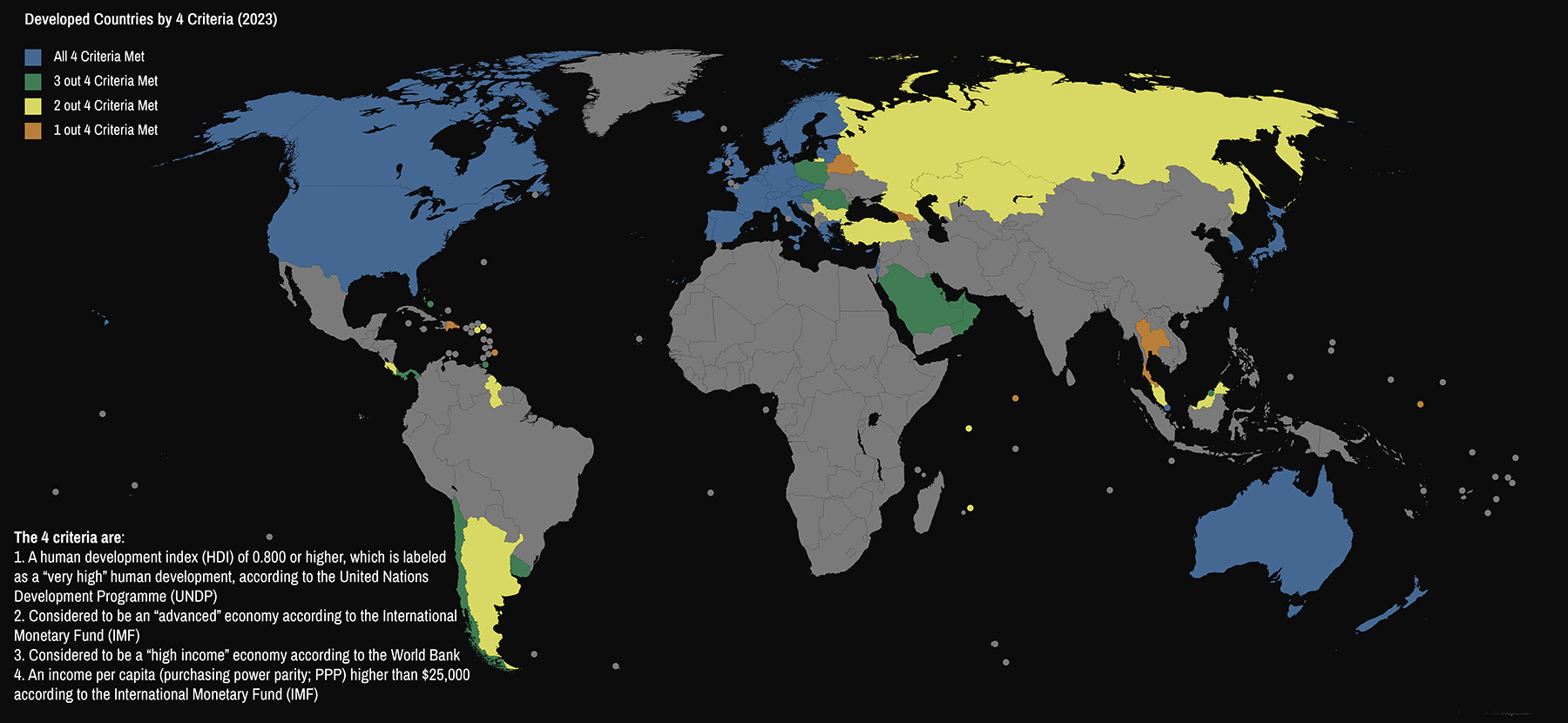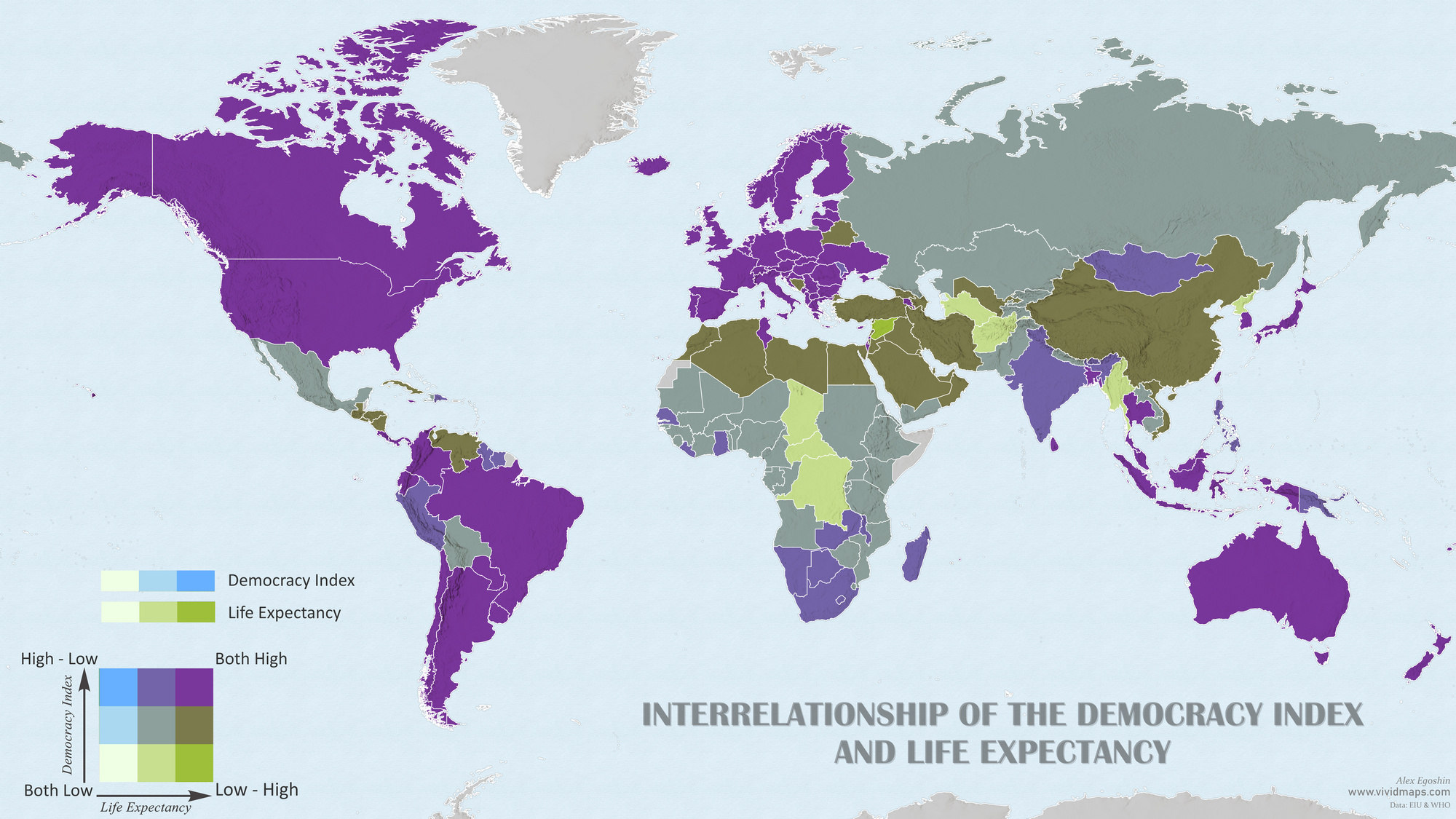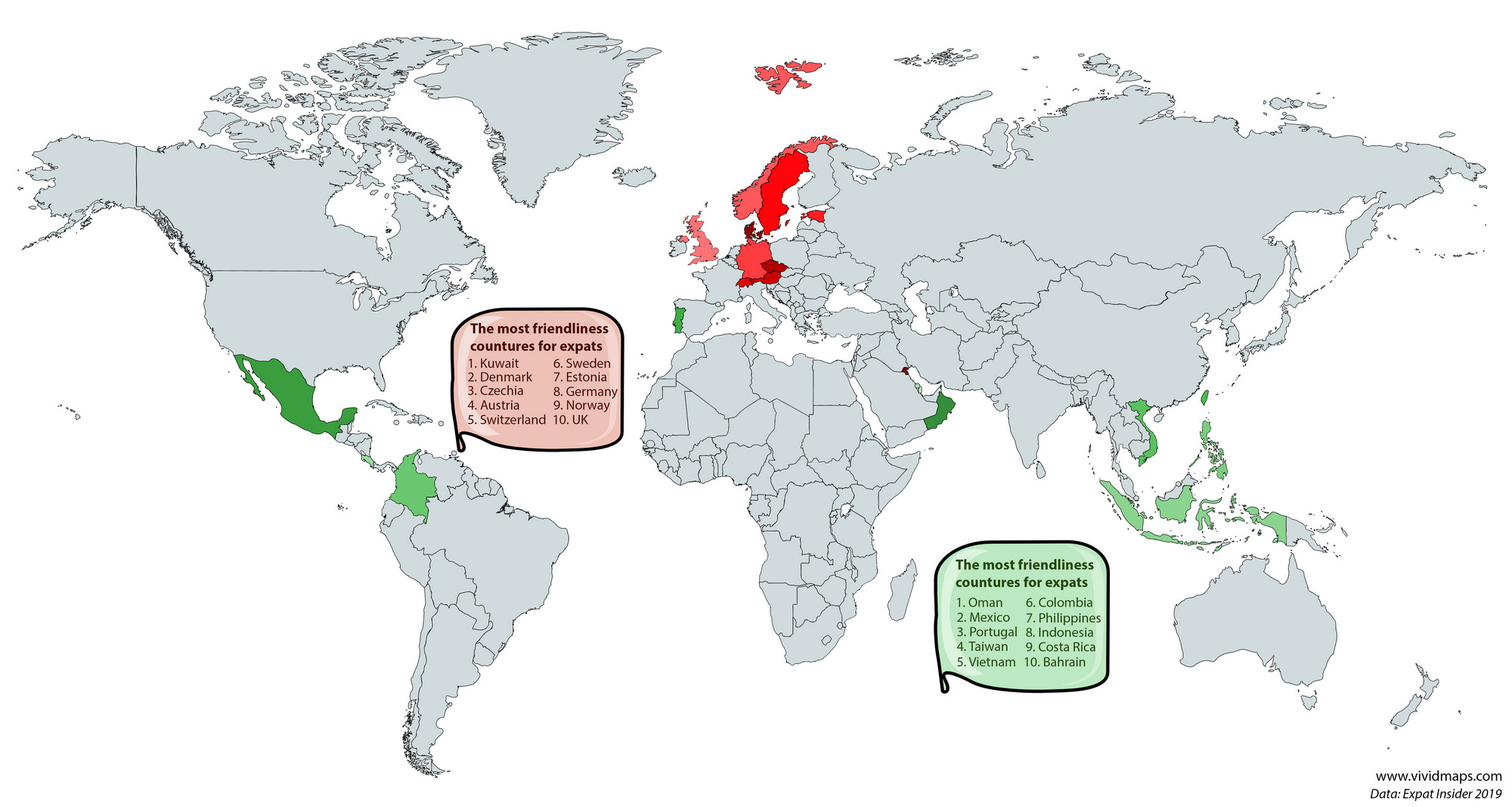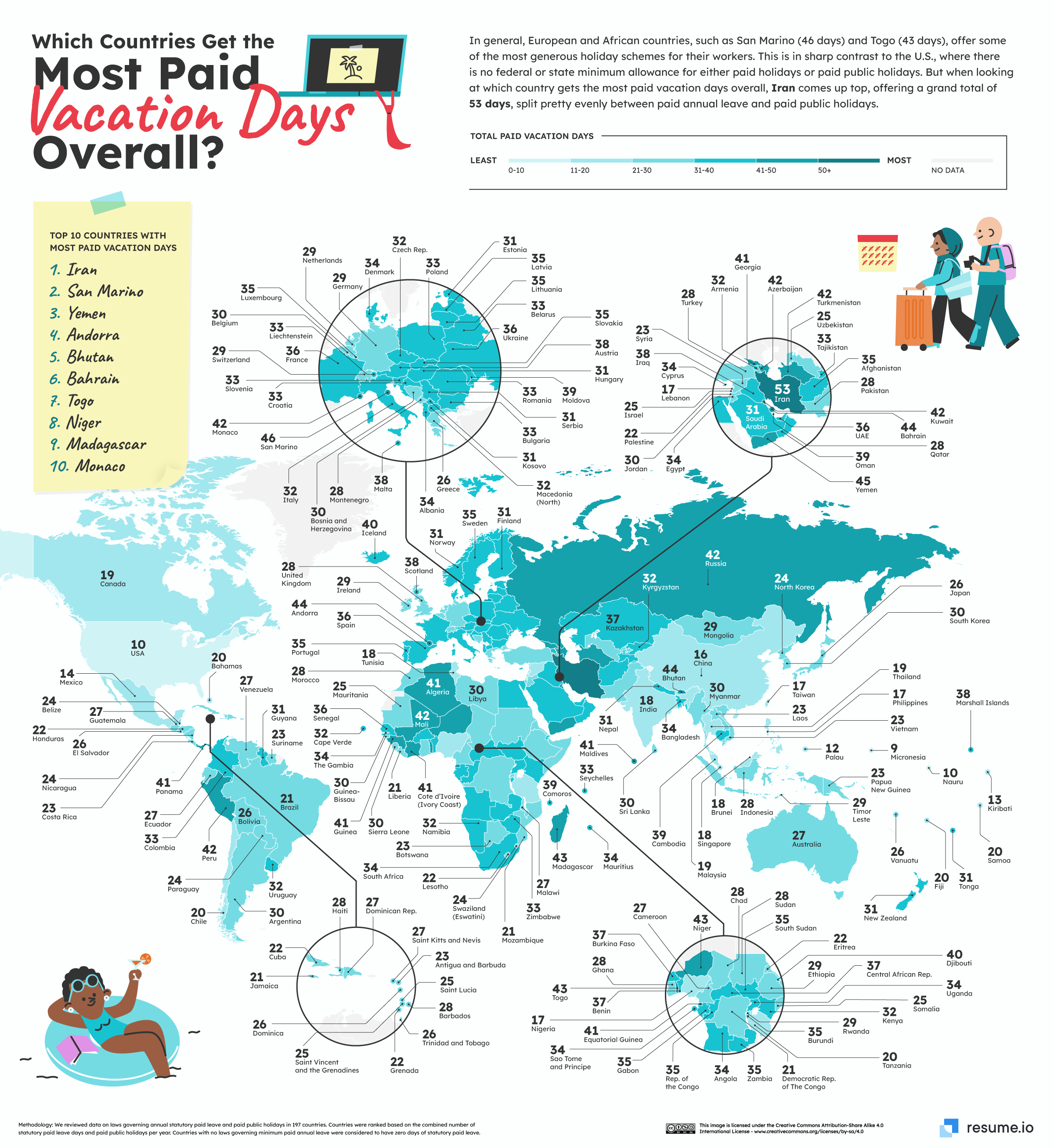Referendum to join the European Union
The European Union today counts 27 members: Austria, Belgium, Bulgaria, Croatia, Cyprus, Czechia, Denmark, Estonia, Finland, France, Germany, Greece, Hungary, Ireland, Italy, Latvia, Lithuania, Luxembourg, Malta, Netherlands, Poland, Portugal, Romania, Slovakia, Slovenia, Spain, and Sweden.
For many of them, joining wasn’t just signed off by governments—it was put to a public vote. Since the early 1970s, 48 referendums have asked Europeans whether their country should enter, remain in, or leave the Union. Some votes passed by landslide, others split the population almost evenly, and in a few places the answer was “no” more than once.
The map below, made by Reddit user Jkvat, shows how people across Europe voted when faced with that question.
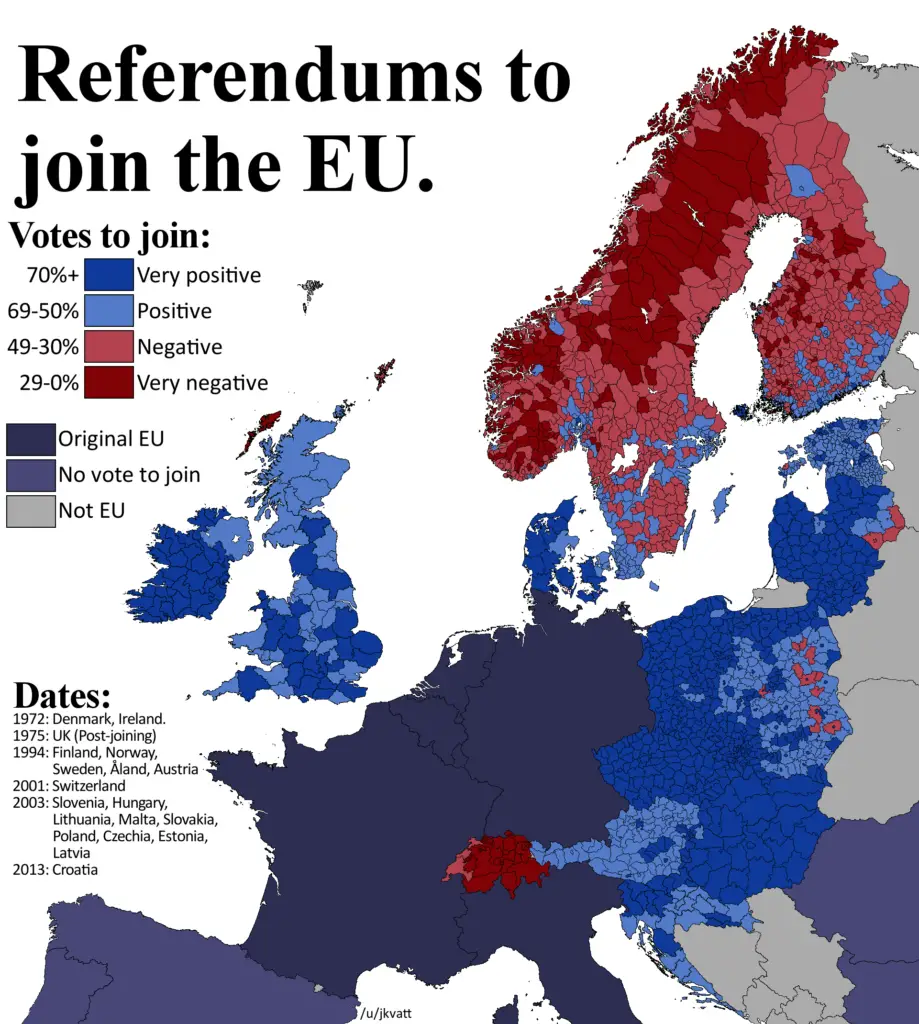
Here’s a look at the key referendums over the years.
| Country / Territory | Year | Result | Yes % | No % |
|---|---|---|---|---|
| Denmark | 1972 | Join | 63.3 | 36.7 |
| Ireland | 1972 | Join | 83.1 | 16.9 |
| Norway | 1972 | Reject | 46.5 | 53.5 |
| UK | 1975 | Remain | 67.2 | 32.8 |
| Greenland | 1982 | Leave | 47.0 | 53.0 |
| Austria | 1994 | Join | 66.6 | 33.4 |
| Finland | 1994 | Join | 56.9 | 43.1 |
| Sweden | 1994 | Join | 52.3 | 47.7 |
| Norway | 1994 | Reject | 47.8 | 52.2 |
| Åland (Finland) | 1994 | Join | 73.6 | 26.4 |
| Switzerland | 1997 | Reject | 25.9 | 74.1 |
| Switzerland | 2001 | Reject | 23.2 | 76.8 |
| Malta | 2003 | Join | 53.6 | 46.4 |
| Czech Republic | 2003 | Join | 77.3 | 22.7 |
| Estonia | 2003 | Join | 66.8 | 33.2 |
| Hungary | 2003 | Join | 83.8 | 16.2 |
| Latvia | 2003 | Join | 67.5 | 32.5 |
| Lithuania | 2003 | Join | 91.1 | 8.9 |
| Poland | 2003 | Join | 77.6 | 22.4 |
| Slovakia | 2003 | Join | 93.7 | 6.3 |
| Slovenia | 2003 | Join | 89.6 | 10.4 |
| Croatia | 2012 | Join | 66.7 | 33.3 |
| San Marino | 2013 | Invalid | 50.3 | 49.7 |
| UK | 2016 | Leave | 51.9 | 48.1 |
| North Macedonia | 2018 | Invalid | 94.2 | 5.8 |
| Moldova | 2024 | Join | 50.4 | 49.6 |
What Stands Out
Some countries jumped in without hesitation. Slovakia’s 93.7% and Lithuania’s 91.1% are among the highest “yes” votes ever cast.
Elsewhere, the mood was far more cautious. Sweden (52.3%) and Malta (53.6%) barely tipped over the halfway mark. Finland’s margin was also narrow.
Then there are the repeated rejections. Norway voted against joining twice, and Switzerland turned down membership more than once as well. Greenland, though part of Denmark, went the other direction and chose to leave in 1982—still the only territory ever to do so.
And of course, the UK’s story is unique: a solid “yes” in 1975, followed by the Brexit vote in 2016 that pulled the country out.
These referendums show that decisions about the EU have always gone beyond economics. They’ve tapped into questions of national identity, independence, and how people picture their future in Europe.

